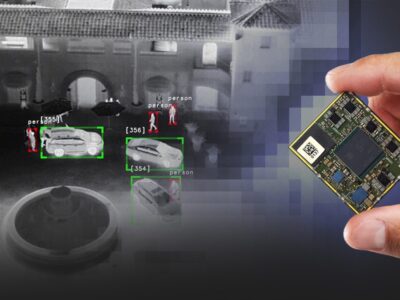
DC-DC converters target wearables, IoT devices
VFM DC-DC converters helps today’s wearable and IoT devices that mainly operate in a sleep mode and power consumption is significantly defined by the quiescent current.
The RP516 and RP517 are optimized to prolong battery life and are designed for applications that require a low supply voltage in between 0.3 and 1.2 V. This kind of power supply is tailored to support the newest generation of low power MCU’s, GPS/GNSS receiver/processors and other ICs which are required in IoT applications for a low power wireless sensor network and wearable devices.
The converters operate in a VFM mode rather than pulse width modulation (PWM) and the efficiency at light loads in particular was considerably improved and has a peak at 75%, even at 0.01 mA output current an efficiency performance of about 67% is achieved (conditions: Vout=0.5V, Vin=1.8V).
The low quiescent current of only 300 nA for the VFM DC-DC converters also contributes to extend battery life or makes it possible for the designer to select a smaller sized battery for the application. The main difference between the two products is the output current power with 100 and 300 mA respectively. Both use synchronous rectification and have high and low side MOSFET driver transistors embedded.
Three different packages are available for the VFM DC-DC converters. There is a standard SOT-89-5, leadless DFN2527-10 or the most compact WLCSP-8-P1 package. By using the proposed external components, it takes up only 8.3 mm2 of printed circuit board area. With the wide input voltage range, the two VFM DC-DC converters are able to operate from various power supplies like a USB port, a single cell Li-Ion and other regular batteries.
Protection circuits are integrated in the VFM DC-DC converters. An Under Voltage Lock-Out circuit disables the converter in case the input voltage drops below a minimum threshold. A soft-start circuit controls the output voltage to ramp-up smoothly, preventing any output overshoot and undershoot during the start-up period. The Lx current limit circuit prevents the peak current through the inductor to exceed a specific maximum current threshold.
The RP516 and RP517 have an optional auto-discharge function; this feature rapidly discharges the output capacitor once the CE pin disables the chip.
 If you enjoyed this article, you will like the following ones: don't miss them by subscribing to :
eeNews on Google News
If you enjoyed this article, you will like the following ones: don't miss them by subscribing to :
eeNews on Google News




